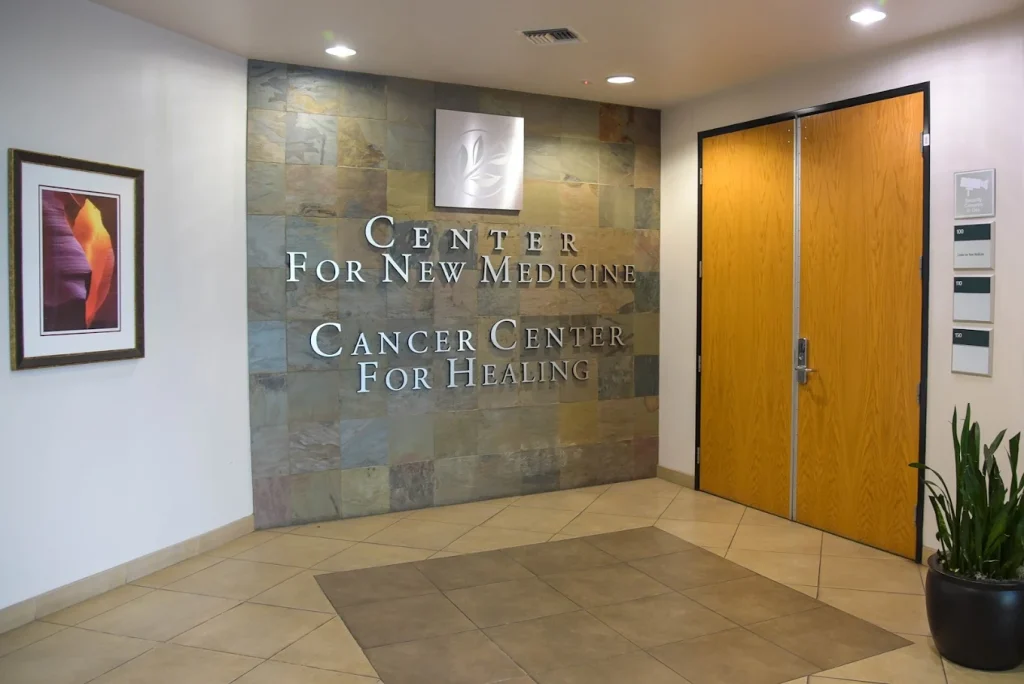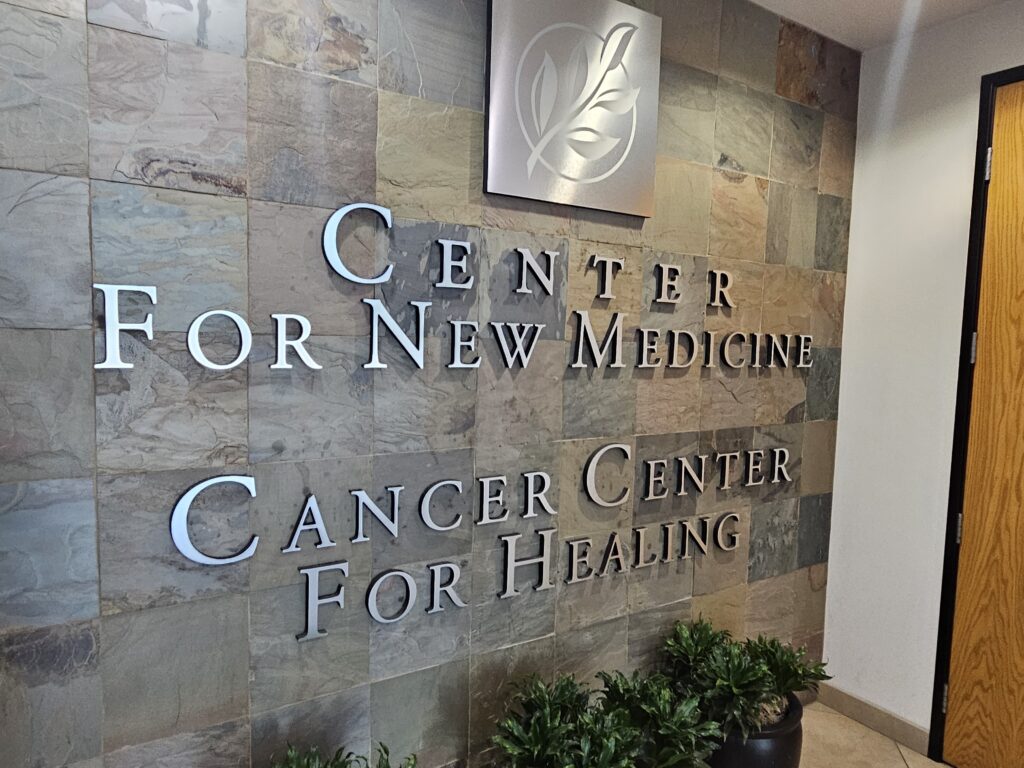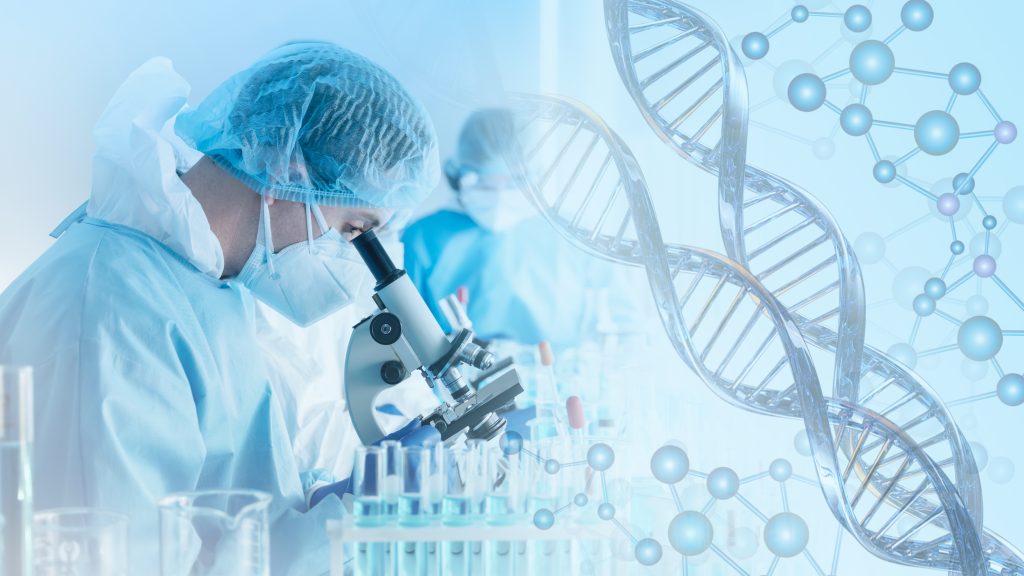Glioblastoma is a highly aggressive type of brain cancer that affects the brain or spinal cord. It occurs when the cells in the brain grow uncontrollably, forming a tumor that can have devastating effects on a person’s health. Research has shown that several factors can influence the onset and progression of glioblastoma, including genetic and environmental factors, as well as radiation exposure.
In this article, we will explore the various causes of glioblastoma and the latest research insights on its etiology. We will also discuss the holistic treatment modalities available at Cancer Center for Healing and how they can help treat and manage glioblastoma. But before we do that, let us first understand what glioblastoma is and its impact on a person’s health.
Key Takeaways:
- Glioblastoma is an aggressive type of brain cancer that occurs when cells in the brain grow uncontrollably, forming a tumor.
- Several factors can influence the onset and progression of glioblastoma, including genetic and environmental factors, as well as radiation exposure.
- A holistic approach to cancer care can help manage glioblastoma, providing patients with a comprehensive treatment plan.
Glioblastoma: An Aggressive Brain Cancer
Glioblastoma is a highly malignant brain cancer that arises from the astrocytes, the star-shaped cells that make up the supportive tissue of the brain. It is the most common form of primary brain cancer in adults, accounting for approximately 15% of all brain tumors. Although glioblastoma can occur at any age, it typically affects adults aged 50 to 70 years.
Despite being a relatively rare cancer, glioblastoma is aggressive and deadly. The five-year survival rate for patients with glioblastoma is less than 10%, making it one of the most lethal and challenging forms of cancer to treat.
There are several factors that contribute to the development and progression of glioblastoma, including genetic mutations, environmental factors, and exposure to ionizing radiation. While the exact causes of glioblastoma are still unclear, a better understanding of its etiology is crucial for developing effective treatments and improving patient outcomes.
Genetic Factors of Glioblastoma
Glioblastoma is a complex disease with multiple factors contributing to its development, including genetic factors. In recent years, significant progress has been made in understanding the genetic basis of glioblastoma.
Genetic mutations
Research has identified several genetic mutations associated with the development of glioblastoma. These mutations include alterations in genes such as:
| Gene | Function |
|---|---|
| EGFR | Cell growth and proliferation |
| TP53 | Tumor suppression |
| PTEN | Tumor suppression |
These genetic alterations can lead to uncontrolled cell growth and division, contributing to the formation of tumors. It is important to note, however, that not all glioblastoma cases are caused by genetic mutations.
Predisposition syndromes
In some cases, individuals may inherit genetic predispositions that increase their risk of developing glioblastoma. These conditions include:
- Neurofibromatosis type 1
- Tuberous sclerosis
- Von Hippel-Lindau disease
Individuals with these predispositions should be closely monitored for the development of glioblastoma and other related conditions.
Environmental Factors and Glioblastoma
Glioblastoma is a complex and aggressive brain cancer that can be caused by various environmental factors. Studies have shown that exposure to certain chemicals, radiation, and viruses may increase the risk of developing glioblastoma.
Chemicals
Exposure to certain chemicals, such as pesticides and solvents, has been linked to an increased risk of glioblastoma. People who work in industries where they are frequently exposed to these chemicals are at higher risk. Additionally, studies have shown that exposure to chemicals in consumer products, such as certain flame retardants, may also increase the risk of developing glioblastoma.
Ionizing Radiation
Exposure to high levels of ionizing radiation, such as that from radiation therapy for other cancers or from nuclear accidents, may increase the risk of developing glioblastoma. However, the risk is generally low and the benefits of radiation therapy for treating other cancers usually outweigh the risks.
Viruses
Research has suggested that certain viruses, such as cytomegalovirus (CMV) and simian virus 40 (SV40), may contribute to the development of glioblastoma. However, more research is needed to fully understand the relationship between these viruses and glioblastoma.
Overall, the relationship between environmental factors and glioblastoma is complex, and more research is needed to fully understand the role these factors play in the development of glioblastoma. At Cancer Center for Healing, we take a holistic approach to cancer care, which includes addressing environmental factors that may contribute to the development or progression of glioblastoma.
Radiation and Glioblastoma
One of the most significant risk factors for developing glioblastoma is exposure to radiation. This exposure can come from a variety of sources, including:
- Previous radiation treatment for another type of cancer
- Exposure to nuclear fallout
- Industrial radiation exposure
- Exposure to radiation during air travel
The exact mechanism by which radiation exposure leads to glioblastoma is not fully understood, but it is believed to damage DNA and alter the genetic makeup of cells in the brain.
Radiation Therapy for Glioblastoma
Despite its potential to cause glioblastoma, radiation therapy is often an essential part of treatment for the disease. Radiation can be used to shrink tumors and slow their growth, improving a patient’s quality of life and potentially extending their survival time.
However, radiation therapy can also have side effects, including fatigue, hair loss, and skin irritation. More severe side effects can include brain swelling, seizures, and cognitive changes. Patients should discuss the potential risks and benefits of radiation therapy with their healthcare team before beginning treatment.
Glioblastoma Development: Uncontrolled Growth and Spread
Glioblastoma develops from the glial cells in the brain. These cells, which provide support and insulation for the neurons, can mutate and start growing rapidly, forming a mass or tumor in the brain. The tumor can grow by invading and replacing healthy brain tissue, leading to the disruption of normal brain functions.
The uncontrolled growth and spread of glioblastoma can be attributed to the presence of cancer stem cells within the tumor. These cells are resistant to treatment and can self-renew, resulting in the regeneration of the tumor even after initial treatment. Additionally, glioblastoma can invade surrounding brain tissue, making it difficult to remove the entire tumor during surgery and leading to a poor prognosis for patients.
Angiogenesis and Glioblastoma Development
One of the key factors in the development of glioblastoma is angiogenesis. This process refers to the formation of new blood vessels by the tumor in order to obtain the nutrients and oxygen it needs to grow. Glioblastoma is known to secrete vascular endothelial growth factor (VEGF), which promotes the formation of new blood vessels. Inhibiting VEGF can help to slow the growth of glioblastoma by depriving the tumor of its blood supply.
Additionally, the abnormal blood vessels that form as a result of this process can also contribute to the spread of glioblastoma. These vessels can promote the migration of cancer cells to other parts of the brain, leading to the formation of new tumors and further complicating treatment.
Latest Research Insights on Glioblastoma
Glioblastoma is a highly aggressive and treatment-resistant brain tumor. It is the most common type of malignant brain cancer, with a survival rate of only 15 months on average. Researchers have been working diligently to uncover the underlying etiology of glioblastoma to develop more effective treatment options.
Targeting Cancer Stem Cells
Recent studies have shown that cancer stem cells (CSCs) play a critical role in glioblastoma development and resistance to current therapies. These CSCs are a small subpopulation of cells in the tumor that are capable of self-renewal and differentiation. Targeting these CSCs may lead to more effective treatments and better outcomes for patients.
Immune Checkpoint Inhibitors
Another promising avenue of research is the use of immune checkpoint inhibitors to stimulate the patient’s immune system to attack cancer cells. Clinical trials have shown success in treating other types of cancer, and researchers are now investigating their potential in treating glioblastoma.
Novel Therapies
There are several new therapies currently being developed for glioblastoma treatment. One such therapy is the use of oncolytic viruses, which are designed to selectively infect and kill cancer cells. Another therapy uses nanoparticles to deliver chemotherapy drugs directly to the tumor site, minimizing side effects and improving efficacy.
Overall, continued research and collaboration between scientists, clinicians, and patients is essential in identifying new treatment options and improving outcomes for glioblastoma patients. With innovative approaches and breakthroughs in the field, there is hope for a brighter future for those affected by this devastating disease.
Holistic Treatment Modalities at Cancer Center for Healing
At Cancer Center for Healing, patients with glioblastoma can expect a comprehensive and integrative approach to their treatment. The center offers a range of holistic treatment modalities to help manage glioblastoma symptoms, improve quality of life, and support the body’s natural healing processes.
These holistic treatment modalities include:
| Treatment Modality | Description |
|---|---|
| Nutritional Therapy | A personalized nutritional plan created to support the immune system, detoxify the body, and promote overall health. |
| Oxygen Therapy | Delivers pure oxygen to the body, promoting healing, and improving brain function. |
| Intravenous Therapy | Provides vitamins, minerals, and other nutrients directly to the bloodstream to support the immune system and promote healing. |
| Hyperthermia Therapy | Uses heat to kill cancer cells while enhancing the body’s natural immune response. |
| Acupuncture | Stimulates specific points on the body to relieve pain, reduce stress and promote relaxation. |
| Massage Therapy | Reduces stress, relieves tension and promotes relaxation. |
At Cancer Center for Healing, a team of experienced integrative oncologists and other specialists work together to develop a personalized treatment plan tailored to each patient’s specific needs. By taking a holistic approach to glioblastoma treatment, patients can experience improved quality of life, increased energy levels, and a greater sense of well-being.
A Comprehensive Approach to Cancer Care
At Cancer Center for Healing, patients with glioblastoma receive a comprehensive approach to cancer care, which involves treating the whole person, not just the tumor. The team at Cancer Center for Healing understands that glioblastoma is a complex disease, and therefore, treatment strategies must address all aspects of the patient’s health.
A Holistic Approach
The Cancer Center for Healing team believes in a holistic approach to glioblastoma treatment. This approach involves integrating conventional medical treatments, such as surgery, chemotherapy, and radiation, with complementary therapies, such as acupuncture, massage, and nutritional therapies.
Holistic therapies can help manage the side effects of conventional treatment, boost the immune system, and support the body’s natural healing process. The team at Cancer Center for Healing works with patients to develop personalized treatment plans that address their unique needs, preferences, and goals.
Nutrition and Supplementation
Nutrition plays a crucial role in cancer prevention and treatment. At Cancer Center for Healing, patients work with a team of experienced nutritionists who provide guidance on healthy eating habits, menu planning, and the use of supplements to support treatment.
The Cancer Center for Healing team believes in the power of food as medicine and recommends a diet rich in plant-based, whole foods, which are packed with antioxidants, anti-inflammatory compounds, and other cancer-fighting nutrients. They also offer targeted supplementation to support immune function, reduce inflammation, and promote healing.
Mind-Body Therapies
Mind-body therapies, such as meditation, yoga, and guided imagery, can help patients manage stress, anxiety, and other emotional challenges that often accompany a glioblastoma diagnosis.
At Cancer Center for Healing, patients have access to a team of experienced mind-body therapists who provide individualized support and guidance. These therapies can help patients maintain a positive outlook, cope with the challenges of treatment, and improve overall well-being.
Spiritual Counseling
A glioblastoma diagnosis can prompt profound existential questions, and many patients seek spiritual support and guidance during their cancer journey. At Cancer Center for Healing, patients have access to experienced spiritual counselors who offer non-denominational, compassionate care.
Spiritual counseling can help patients explore their values, beliefs, and priorities, and find meaning and purpose in their cancer journey. This type of support can help patients maintain hope, resilience, and a sense of connection throughout treatment.
Dr. Leigh Erin Connealy: Leading the Way
As the founder of Cancer Center for Healing, Dr. Leigh Erin Connealy is at the forefront of integrative cancer care. With over 30 years of experience, Dr. Connealy has become known for her compassionate care and commitment to finding personalized treatment plans for her patients.
Dr. Connealy has long recognized the importance of addressing the root causes of cancer, including genetic and environmental factors, in addition to treating the disease itself. Her approach is based on the belief that cancer is a multifactorial disease that requires a comprehensive approach to treatment.
Dr. Connealy works closely with her patients to create individualized treatment plans that combine the best of conventional and complementary medicine. Her goal is to not only treat the cancer but also to improve her patients’ overall health and well-being.
Dr. Connealy’s expertise in integrative cancer care has made her a sought-after speaker and author. She has written several books, including “The Cancer Revolution” and “Be Perfectly Healthy,” and has been featured in numerous publications, including Newsweek, The Wall Street Journal, and USA Today.
At Cancer Center for Healing, Dr. Connealy and her team provide a range of holistic treatments, including IV therapy, acupuncture, nutritional counseling, and more. By addressing the whole person and not just the disease, they aim to support the body’s natural healing process and help their patients achieve optimal health.
If you or someone you love has been diagnosed with cancer, Cancer Center for Healing offers a compassionate and comprehensive approach to treatment. Contact them today to schedule a consultation with Dr. Connealy and learn more about their integrative cancer care services.
Cancer Center for Healing Consultation
Individuals seeking a holistic approach to cancer care can benefit from a consultation with the Cancer Center for Healing. Led by renowned physician Dr. Leigh Erin Connealy, the center offers cutting-edge integrative therapies to address the root cause of cancer and support whole-body healing.
During the consultation, patients meet with a team of experienced practitioners to develop a personalized treatment plan tailored to their unique needs and health history. The center provides a range of services, including advanced laboratory testing, nutritional counseling, detoxification protocols, and non-toxic cancer therapies.
One of the center’s primary goals is to help patients achieve optimal health and wellness by addressing the underlying factors that contribute to cancer growth and proliferation. By focusing on the whole person rather than just the cancer, the center aims to empower individuals to take an active role in their healing journey and cultivate lifelong habits that support their well-being.
To schedule a consultation with the Cancer Center for Healing, individuals can visit the center’s website or call the office directly. The center welcomes patients from all over the United States and offers remote consultations for those unable to travel to the facility.
Conclusion
In conclusion, while the exact causes of glioblastoma are not known, there are certain factors that have been identified as potential contributors. These include genetic factors, environmental influences, and exposure to radiation. Additionally, the uncontrolled growth and spread of glioblastoma cells is a key factor in the development of this aggressive form of brain cancer.
Researchers continue to explore the etiology of glioblastoma, seeking to better understand the underlying mechanisms of this disease. Meanwhile, cancer treatment centers like Cancer Center for Healing offer a comprehensive approach to cancer care that includes both traditional and holistic treatment modalities.
Under the leadership of Dr. Leigh Erin Connealy, Cancer Center for Healing provides patients with personalized treatment plans that address the unique needs of each individual. Whether through nutritional counseling, acupuncture, or other therapies, the center strives to promote healing and improve patient outcomes.
If you or a loved one is dealing with glioblastoma or another form of cancer, consider reaching out to Cancer Center for Healing for a consultation. Their team of experienced professionals will work with you to create a plan of care that addresses your specific needs and helps improve your quality of life.
FAQ
Q: What causes glioblastoma?
A: Glioblastoma can be caused by a combination of genetic and environmental factors, as well as radiation exposure and uncontrolled growth and spread of cells.
Q: Is glioblastoma an aggressive brain cancer?
A: Yes, glioblastoma is considered an aggressive form of brain cancer, known for its fast-growing and invasive nature.
Q: What are the genetic factors of glioblastoma?
A: Certain genetic mutations, such as alterations in the EGFR, TP53, and IDH genes, have been associated with an increased risk of developing glioblastoma.
Q: What are the environmental factors associated with glioblastoma?
A: Environmental factors that may contribute to the development of glioblastoma include exposure to certain chemicals, toxins, and electromagnetic radiation.
Q: How does radiation play a role in glioblastoma?
A: Radiation exposure, such as from previous cancer treatments or occupational exposure, has been linked to an increased risk of developing glioblastoma.
Q: How does glioblastoma develop?
A: Glioblastoma develops as a result of uncontrolled growth and spread of abnormal cells in the brain, leading to the formation of a tumor.
Q: What are the latest research insights on glioblastoma?
A: Ongoing research is focused on understanding the underlying causes and mechanisms of glioblastoma, as well as identifying potential new treatment approaches.
Q: What holistic treatment modalities are offered at Cancer Center for Healing?
A: Cancer Center for Healing offers a comprehensive range of holistic treatment modalities, including nutritional therapy, detoxification, mind-body medicine, and more.
Q: What is the comprehensive approach to cancer care at Cancer Center for Healing?
A: The comprehensive approach to cancer care at Cancer Center for Healing encompasses personalized treatment plans that address the physical, emotional, and spiritual aspects of healing.
Q: Who is Dr. Leigh Erin Connealy?
A: Dr. Leigh Erin Connealy is a leading expert in integrative and holistic medicine, specializing in the treatment of cancer and other chronic diseases.
Q: How can I schedule a consultation at Cancer Center for Healing?
A: To schedule a consultation at Cancer Center for Healing, please contact our office directly to speak with one of our patient care coordinators.


















